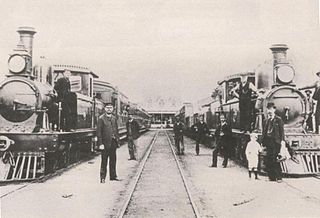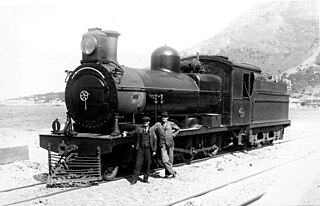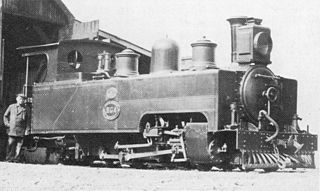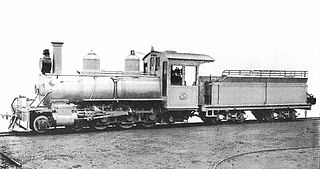The following lists events that happened during 1880 in South Africa.
The following lists events that happened during 1876 in South Africa.
The following lists events that happened during 1875 in South Africa.

The South African Railways Class NG G13 2-6-2+2-6-2 of 1927 are a class of narrow gauge articulated steam locomotives.

The South African Railways Class NG15 2-8-2 is a class of narrow-gauge steam locomotives.

The Avontuur Railway is a closed railway line between Port Elizabeth and the town of Avontuur in the Western and Eastern Cape provinces of South Africa. It is the longest 610 mm narrow gauge route in the world at a length of 285 kilometres (177 mi). "Avontuur" is the Afrikaans and Dutch word for "adventure".

The South African Railways Class 91-000 of 1973 was a narrow-gauge diesel–electric locomotive.

The Cape Government Railways (CGR) was the government-owned railway operator in the Cape Colony from 1874 until the creation of the South African Railways (SAR) in 1910.

The South African Railways Class 12B 4-8-2 of 1920 was a steam locomotive.

The South African Railways Class 12 4-8-2 of 1912 was a steam locomotive.

The South African Railways Class 7 4-8-0 of 1892 is a steam locomotive from the pre-Union era in the Cape of Good Hope.

The South African Railways Class 6A 4-6-0 of 1896 was a steam locomotive from the pre-Union era in the Cape of Good Hope.

The South African Railways Class NG3 4-6-2T of 1907 was a narrow-gauge steam locomotive from the pre-Union era in the Colony of Natal.

The South African Railways Class NG8 4-6-0 of 1904 was a narrow-gauge steam locomotive from the pre-Union era in the Cape of Good Hope.

The South African Railways Class NG9 4-6-0 of 1915 was a narrow-gauge steam locomotive.

The South African Railways Class NG10 4-6-2 of 1916 was a narrow-gauge steam locomotive.

The South African Railways Dock Shunter 0-4-0ST of 1903 was a steam locomotive from the pre-Union era in the Cape of Good Hope.

The Cape Government Railways 0-4-0ST of 1873 was a South African steam locomotive from the pre-Union era in the Cape of Good Hope.

The Cape Government Railways Type A 2-6-4T of 1902 was a South African steam locomotive from the pre-Union era in the Cape of Good Hope.

The Cape Government Railways NG 0-4-0T was a South African steam locomotive from the pre-Union era in the Cape of Good Hope.




















